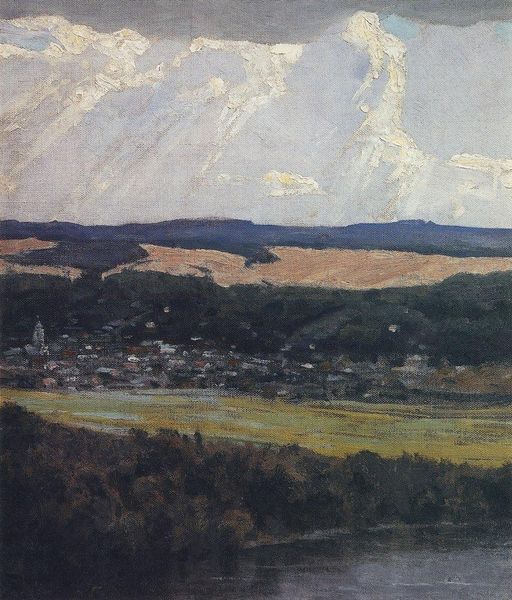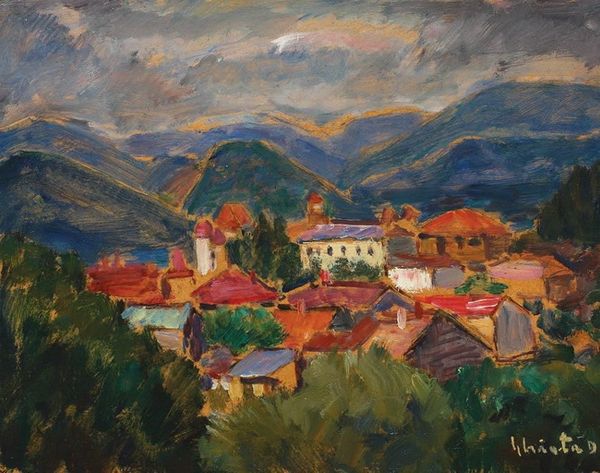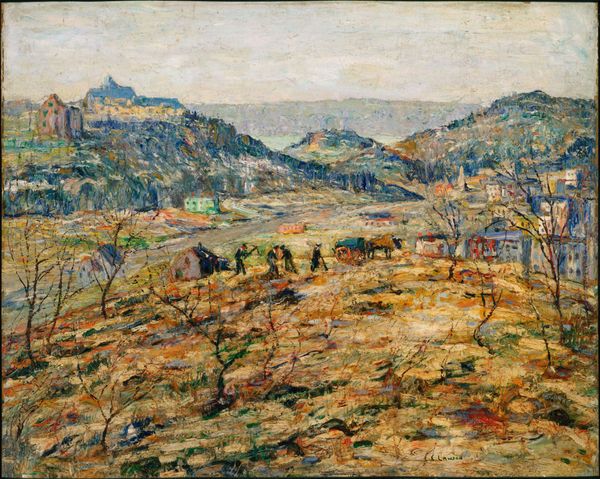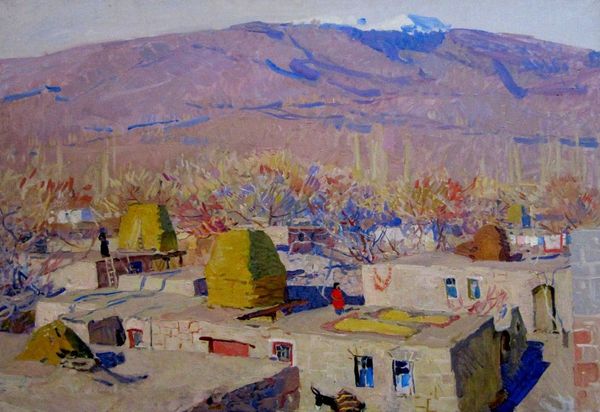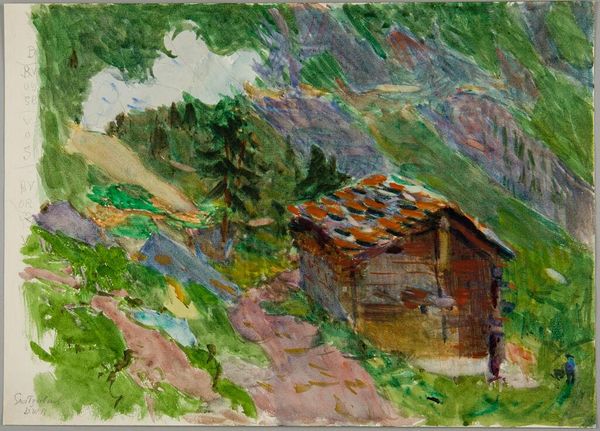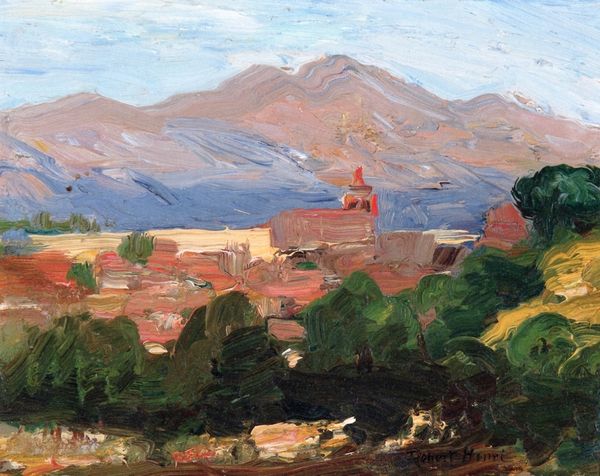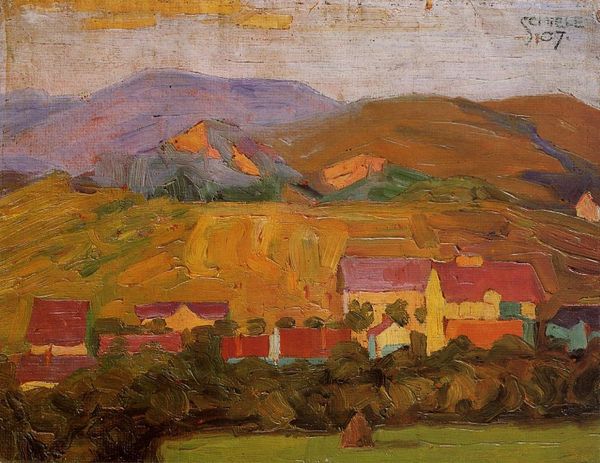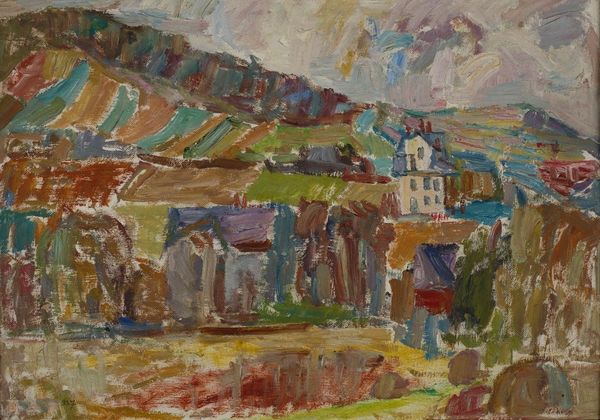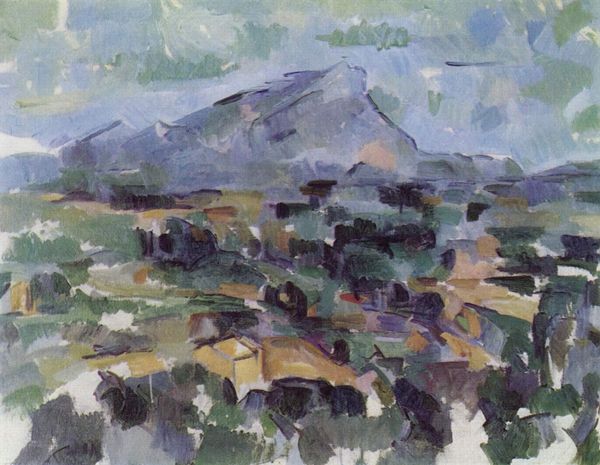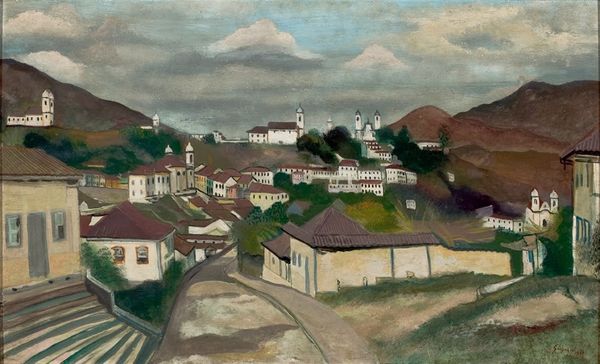
oil-paint
#
oil-paint
#
landscape
#
soviet-nonconformist-art
#
impressionist landscape
#
social-realism
#
oil painting
#
cityscape
#
realism
Copyright: Veniamin Kremer,Fair Use
Curator: Veniamin Kremer painted this cityscape, "In Magnetogorsk," in 1932. Editor: There's a striking duality here. The industrial architecture sprawls out, yet it’s dwarfed by the imposing mountain range in the backdrop. It feels almost unsettling. Curator: Kremer was working within the sphere of Soviet Nonconformist Art and arguably Social Realism. So it's interesting to consider what this depiction of industrialization might be suggesting in terms of the lived realities. The context is really the rapid industrialization during Stalin's first Five-Year Plan, the promise and the often brutal reality. Editor: The materiality speaks to that struggle. The visible brushstrokes and muted palette convey a certain rawness, an almost rushed quality, reflecting the speed and intensity of industrial production. I wonder what pigments were locally accessible and affordable at the time? The texture seems so vital to conveying the labor involved. Curator: Absolutely. Considering that landscape—a key visual trope for centuries—is being used to represent this emerging industrial town, and thus, the working class who occupied and built it. What is their place here in the visual hierarchy, dwarfed in relation to a land that represents the natural resources that provide the possibility for exploitation? I can't help but feel this intersection is critical to how we understand the social landscape in the painting. Editor: I agree. It's not simply a romantic portrayal of industrial progress, but rather a more complex statement. The composition positions the viewer high above the city, overlooking a dense aggregation of repetitive structures. Curator: And by extension it might evoke a sense of distance or alienation? Perhaps it is reflective of the lived experiences of migrant workers uprooted from rural communities into rapidly growing cities. Their subjectivities, labor, and the resulting human cost. It is worth questioning to whom exactly that "progress" actually belongs. Editor: Yes, I think it's precisely that tension between the promise of progress and the weight of reality that makes this piece so compelling. The materials betray a sense of human intervention, both constructive and perhaps, destructive. Curator: Looking at it again, I'm struck by how Kremer positions Magnetogorsk, this burgeoning industrial powerhouse, not just in relationship to nature but within this broader historical moment, raising critical questions about class and the very definition of advancement. Editor: Ultimately, the painting, with its materiality and visual vocabulary, encapsulates both the monumental scale of industrialization and the individual stories interwoven into the fabric of that history.
Comments
No comments
Be the first to comment and join the conversation on the ultimate creative platform.
